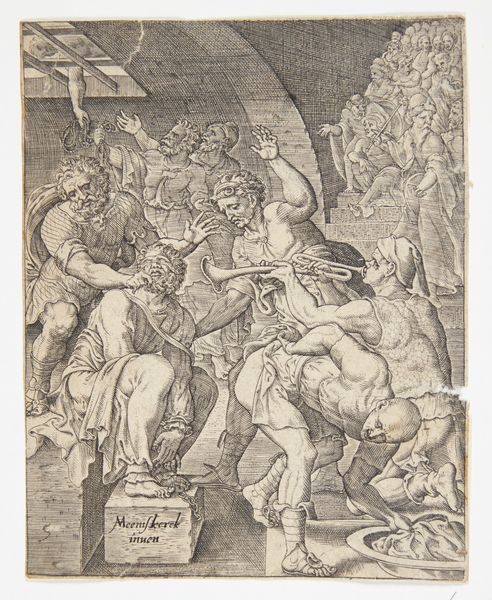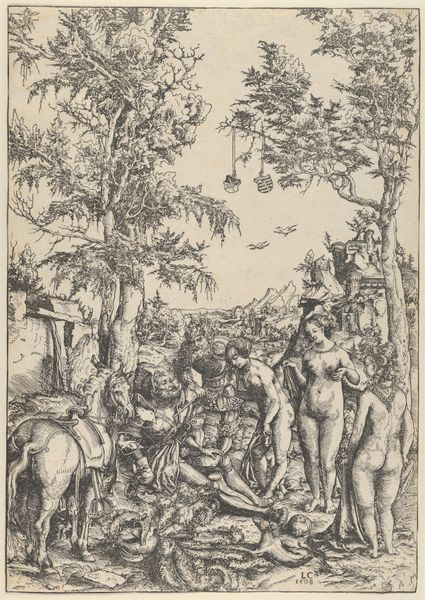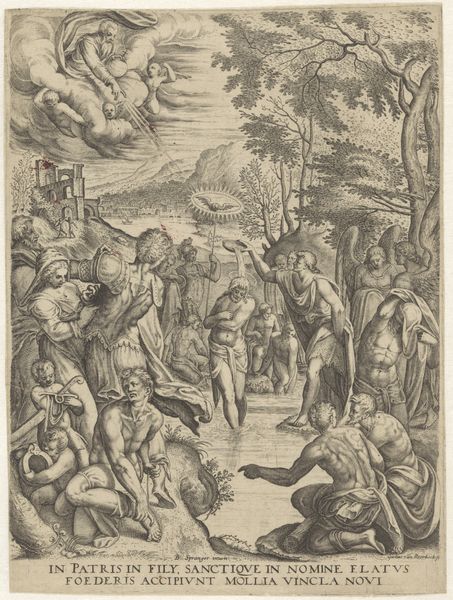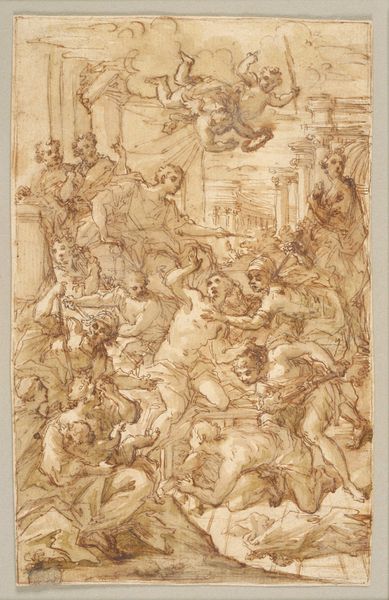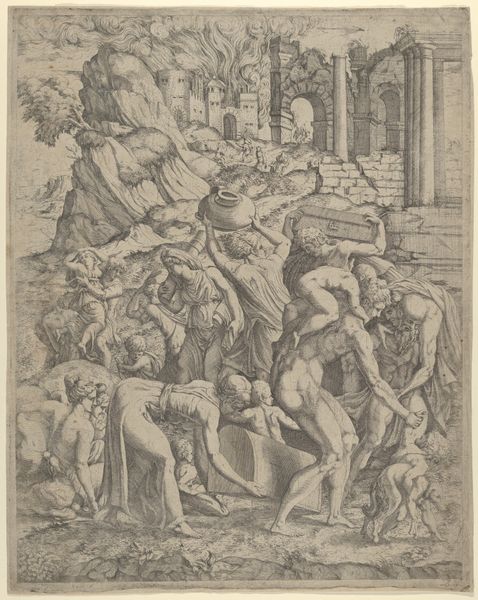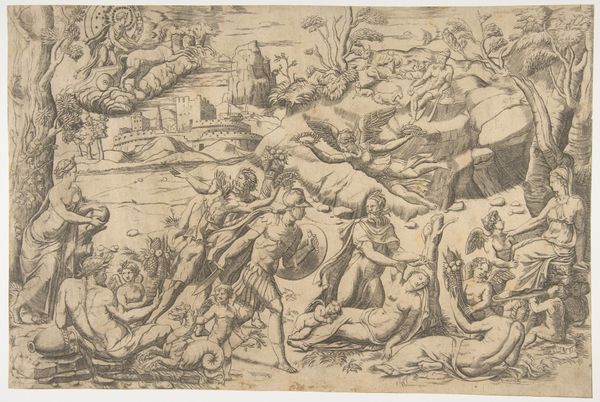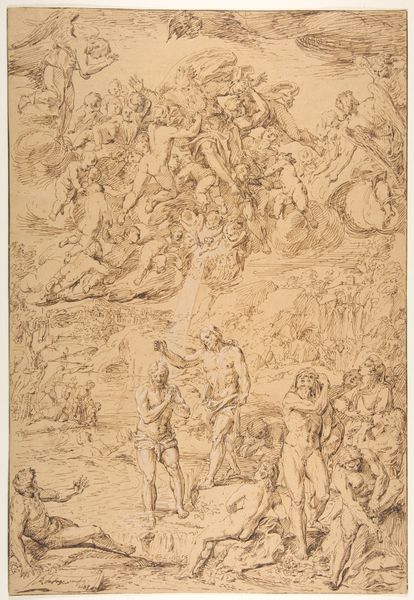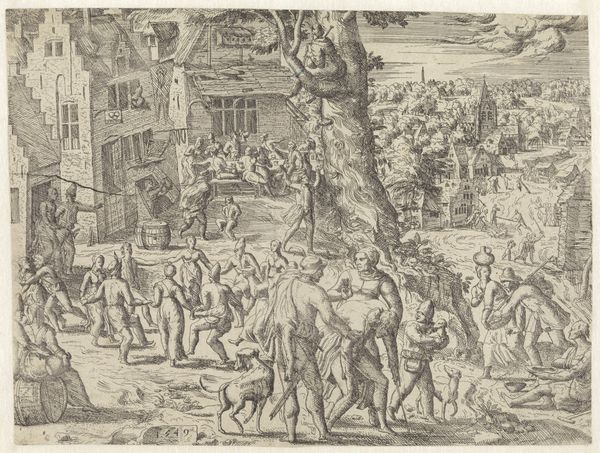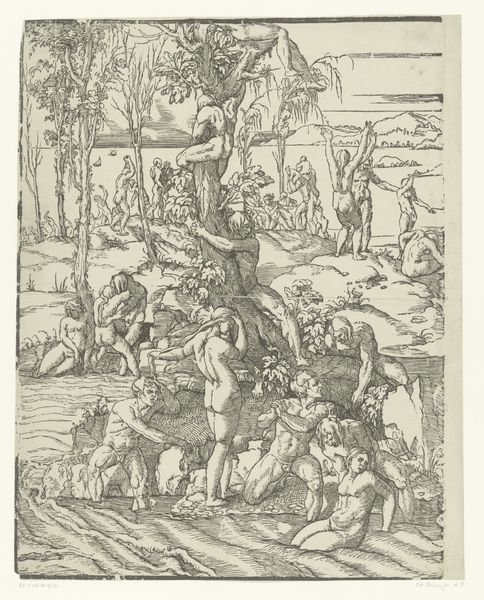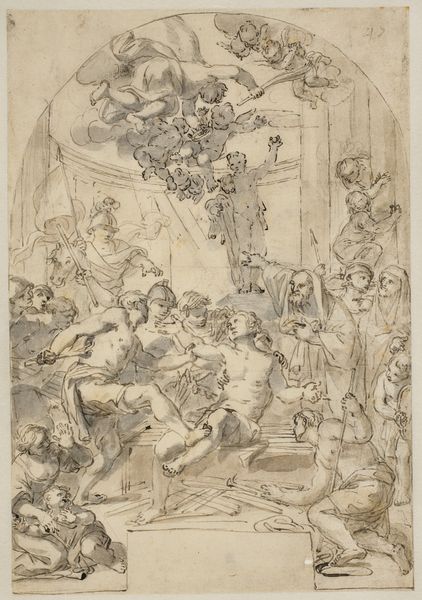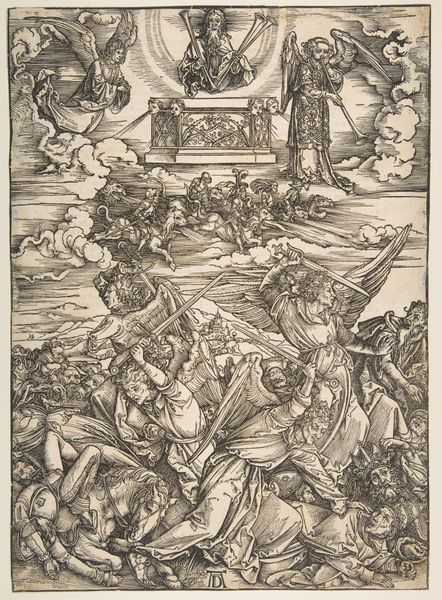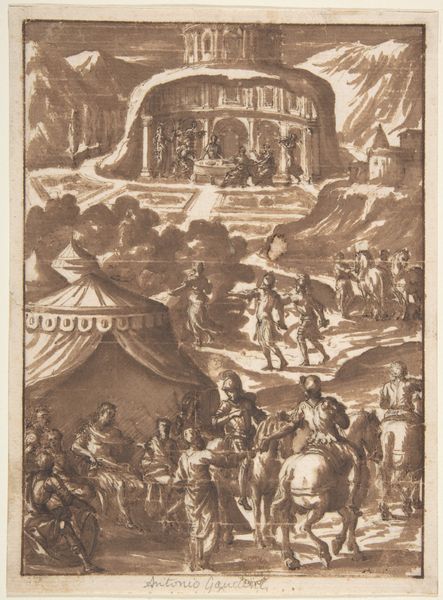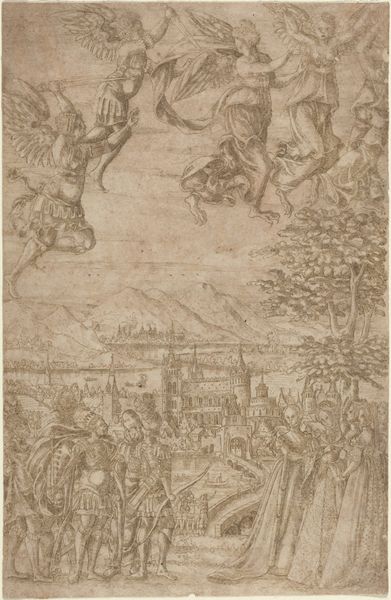
drawing, print, ink
#
drawing
#
allegory
#
baroque
#
ink painting
# print
#
landscape
#
figuration
#
ink
#
history-painting
#
academic-art
Dimensions: 7-3/4 x 5-3/4 in. (19.7 x 14.6 cm)
Copyright: Public Domain
Curator: This intriguing drawing is called “Mythological Scene.” Antonio Gandini created this ink artwork sometime between 1602 and 1630. Editor: It's certainly a dynamic piece! A bit chaotic, actually. My eye bounces around between the struggling figures, the architecture, and those ships in the distance. The monochromatic ink wash gives it an intense, dramatic mood. Curator: It definitely encapsulates that Baroque flair for drama. I am immediately drawn to the ways that symbols of struggle repeat: humans fighting mythological creatures, sea battles on the horizon, snakes on land, as if conflict defined every sphere of existence. Gandini appears to use those symbolic repetitions to convey emotional and philosophical meanings. Editor: Yes, but the "meaning" feels somewhat inaccessible today. I can sense a grand narrative being suggested, but what *is* it commenting on? This isn’t a singular scene from a well-known myth, is it? More generally, it reveals the 17th-century’s fixation on these complex allegories and their consumption of mythological tropes in both politics and culture. Curator: I agree. It suggests history, but refigured as allegory. Figures emerge, caught in between earthly towers and heavenly illumination; the boundaries of these symbols collapse. The viewer then has to untangle those boundaries. It’s not just *what* they represent, but *how* those meanings might be re-ordered or subverted. What's compelling to me is the way cultural memory is layered into the imagery, almost like a coded message. Editor: Gandini has created a fascinating puzzle with a unique way of exploring universal conflicts. I imagine interpretations have greatly varied over time in the face of changing political moods. Curator: Indeed. Its cultural relevance continues to shift. It's those symbolic constellations, resonating across time, that capture my attention. Editor: For me, it's the questions about what this composition might have *meant* at different historical junctures and in what settings it was likely viewed. An inexhaustible subject!
Comments
No comments
Be the first to comment and join the conversation on the ultimate creative platform.
